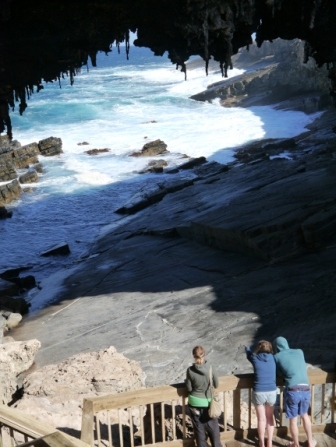Let’s face it, times are tough. Rising prices, stagnating salaries, no savings (well, for most of us anyway)…
But do austere times mean we can’t enjoy ourselves? Didn’t think so either. So where to head next to get a taste of the good life without breaking the bank? Adelaide, of course! And make it March, to get a proper taste of the buzzing city.
Although Adelaide is smaller than Sydney, Melbourne or Brisbane the quality of lifestyle and education is still great, and it’s cheaper! Statistics show it costs 25% more to live in Sydney and Melbourne, and 11% more to live in Perth and Brisbane (according to The Economist Intelligence Unit, 2011).
So how to get the most out of your limited budget while in Adelaide? Read on to discover what you can do/see in Adelaide for free or for very little.
1. EAT LIKE A LOCAL
Adelaide is all about fresh produce. If you want to eat like the locals head to the Adelaide Central Market (we spent some quality time there, check out our ‘Food, Arts and Fairgrounds‘ post), right next to Chinatown. It is the mother of all produce markets, some three million people pass through it every year. It boasts more than 80 speciality stores, representing over 60 nationalities. Try the freshly harvested fruit and vegetables, meat and seafood. And if you’re hunting for a bargain be there from 1pm on a Saturday – everything is literally a steal!

Instead of driving or relying on public transportation to get you around the city, opt for two wheels instead. Adelaide City Council’s bike scheme gives you FREE UNLIMITED bike hire (so good!) during the operational hours of the program (this differs depending on the pick-up point but is usually 8/9am to 4/6pm). All you need is an ID (driver’s licence or a passport) to be held as a deposit, helmet and a padlock are provided.
If you insist on using public transport make sure to make the most of free city buses and tram services in Adelaide: the free ‘Terrace to Terrace’ tram service, the City Loop (99C) and the Adelaide Connector (linking north and south Adelaide).

3. SOAK UP SOME CULTURE
Adelaide offers plenty cultural attractions for free, whether you are into aboriginal history, architecture or galleries.
The South Australian Museum, located in the city’s cultural hub – North Terrace – is a haven for those who want to get out of the sun, or if there’s an occasional rainy day in the city. There’s loads of fascinating exhibits ranging from giant squid to aboriginal culture (the museum is home to the world’s largest collection of Australian Aboriginal cultural objects, with over 3,000 artefacts on display). We paid absolutely nothing for a good two hours of museum entertainment, excellent.
There is also Tandanya, the National Aboriginal Cultural Institute (see our day of Aboriginal culture), the Art Gallery of South Australia, the Jam Factory (ceramics) and a lot more. Or you can always pop down to Rundle Mall to enjoy some street art.

4. CHEER FOR YOUR FAVOURITE TEAM
We all know sports is one of the favourite Aussie pastimes (right after ‘putting another shrimp on the barbie’) 🙂 so in the spirit of ‘When in Rome do as the Romans do’ you have to give it a go. And what better way than to enjoy the cricket at Adelaide Oval, widely regarded as the most picturesque test cricket ground in the world (check out our experience in the ‘Sun, Surf, Cricket and Tchaikovsky‘ post). If you are on a tight budget just look up a pre-season match (which is usually free). All you have to do then is to get yourself a pint of lager, sit back and enjoy.

5. MOVIES NIGHT
Many mainstream and art house cinemas can be found across Adelaide, and students are entitled to concessions when they show their student card. If you’re not a student don’t worry, many cinemas have cheaper prices on Tuesdays.
That’s Part 1 from us, Part 2 coming soon.





































